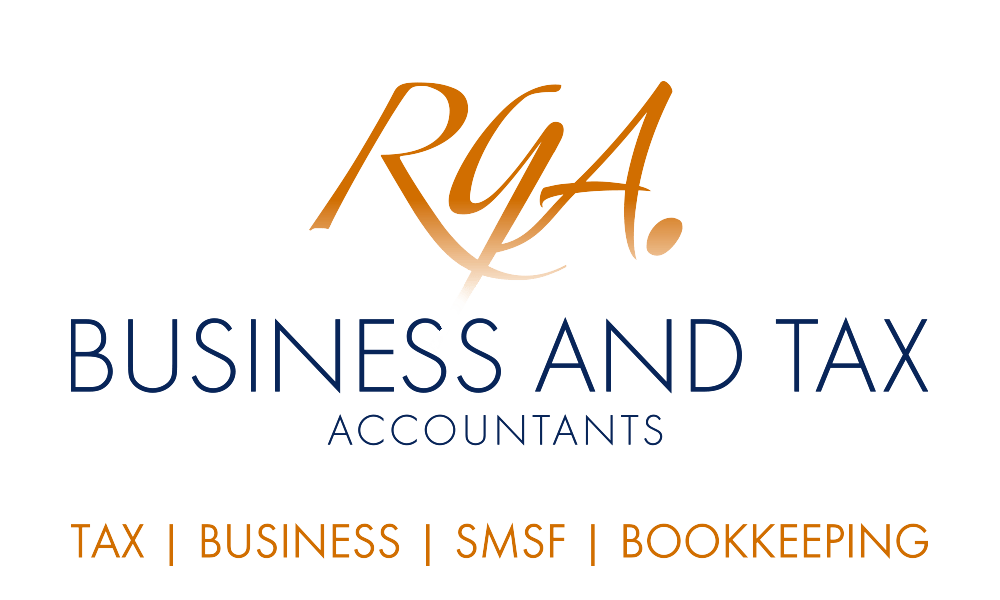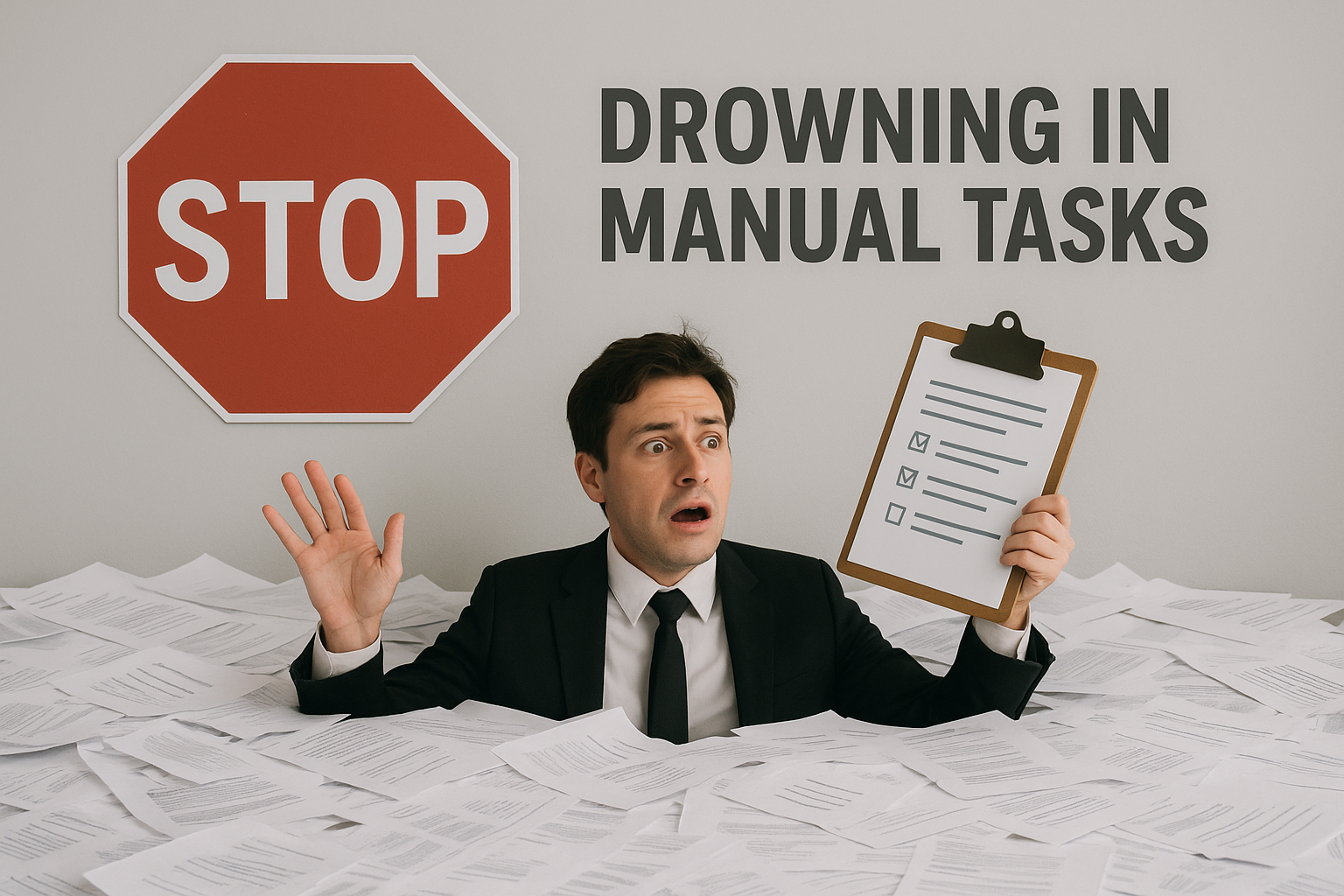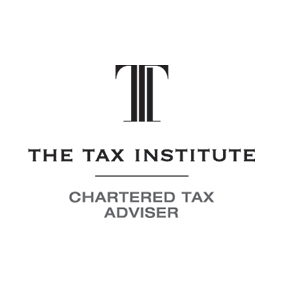November 2025 Tax Newsletter

Welcome to our November 2025 newsletter—packed with key tax deadlines, updates, and tips to help you stay compliant and informed.
Dual cab utes and FBT
The ATO wishes to dispel the 'common myth' that dual cab utes are automatically exempt from fringe benefits tax ('FBT'). If an employer provides dual cab utes to staff to complete their duties and the vehicle is available for personal use, then the benefit may be subject to FBT.
By understanding how their employees use their dual cab utes, employers can work out if FBT applies and meet their FBT obligations.
To qualify for an exemption, the dual cab ute must be an 'eligible vehicle'. That is, it must be designed to carry a load of one tonne or more, or more than eight passengers (including the driver), or a load under one tonne and not primarily designed for carrying passengers.
The dual cab ute must also only be used for limited private use (i.e., minor, infrequent and irregular), such as the occasional trip to the tip or helping a mate move house.
If an employee's personal use of the dual cab ute does not meet both of the above exemption conditions, then the employer will be liable for FBT.
ATO reminder: Business expenses that can (and cannot) be claimed
Taxpayers can claim a tax deduction for most business expenses, provided they meet the ATO's three 'golden rules':
- The expense must be for business use, not for private use.
- If the expense is for a mix of business and private use, they can only claim the portion that is used for business.
- They must have records to prove their claim.
The ATO also wants business taxpayers to remember that there are some expenses that they cannot claim, including entertainment expenses, traffic fines, and expenses that relate to earning non-assessable income.
ATO's focus on small business
The ATO is 'detecting and addressing' recurring errors in specific industries when businesses have a turnover between $1 million and $10 million.
These industries include property and construction (including builders, contractors and tradies), and professional, scientific and technical services (including engineering, design, IT and consulting professionals).
In these industries, the ATO continues to see recurring issues, including:
- omitted sales and income in BAS and tax returns, including income from related entities;
- overclaimed expenses and GST credits;
- private expenses incorrectly reported as business-related, or not properly apportioned between business and personal use;
- failure to register for GST when required;
- incorrect claims for the research and development (R&D) tax incentive offset, especially for activities that do not meet the eligibility criteria; and
- not seeking independent advice from a registered tax agent, particularly in head contractor/subcontractor arrangements.
By sharing the issues that it is seeing, the ATO hopes to help taxpayers running a small business in one of these (or other) industries to avoid common errors and get it right from the start.
New ATO Data-Matching Programs
The ATO acquires and uses data for pre-filling, detecting dishonest or fraudulent behaviour, and identifying areas where it can educate taxpayers to help them understand their tax obligations.
When data does not match, the ATO may contact tax agents and their clients to find out why.
Rental Income Data-Matching
Over the coming months, the ATO will be sending letters where its data indicates:
- tax returns including rental income may need to be lodged for specific years; or
- rental income should be included in previously lodged tax returns.
Please contact us if you receive such a letter.
Offshore Merchant Data-Matching Program
The ATO will acquire merchant data from the big four Australian banks (ANZ, Commonwealth Bank, National Australia Bank and Westpac) for the 2025 to 2027 income years.
The ATO estimates that records relating to approximately 9,000 offshore merchants will be obtained each financial year.
SMSF non-compliance with release authorities
Release authorities are documents issued by the ATO to super funds, authorising the release of money from a member's super account to pay specific liabilities, including in relation to excess concessional contributions, excess non-concessional contributions, and Division 293 tax assessments.
The ATO is seeing a rise in SMSFs that receive a release authority and are either:
- not responding within 10 business days as required; or
- responding incorrectly (i.e., either not releasing the requested amount, or failing to submit a release authority statement back to the ATO, or both).
Failure to meet these obligations may result in significant penalties for the fund. SMSF trustees should make sure they have effective processes in place to respond to release authorities promptly and accurately.
GST held to apply to sales of subdivided lots
The Administrative Review Tribunal ('ART') recently held that some sales of subdivided farmland were subject to GST as they were made by the taxpayer in the course of carrying on an enterprise.
The taxpayer owned farmland near Adelaide. He entered into an agreement with a developer, under which the developer sought rezoning and development approvals, carried out development works, and marketed the subdivided lots.
The taxpayer progressively gave the developer access to the property as required and signed documents where necessary, including contracts for the sale of the subdivided lots. The taxpayer received 20% of the proceeds of sale progressively as sales of the subdivided lots were completed, with the developer receiving the remaining 80%.
The taxpayer argued that his role was passive, and that such rights as he had, and actions he took under the agreement with the developer, were of an administrative nature not amounting to a series of activities in the form of a business.
The ART disagreed, finding that the sales of the subdivided land were subject to GST as they were made in the course of carrying on an enterprise.
The ART noted that the taxpayer's activities "exhibited some of the well-known indicia of a business."
Amongst other factors, the taxpayer's activities in facilitating the implementation of the development agreement "had a degree of regularity and repetition", including allowing access to the land progressively as required, an ongoing obligation not to encumber or sell the land during the project, and the continuous signing of sales contracts and monitoring of sales returns.
Super Tax Shake-Up: Big Balances Beware
If your super balance is comfortably below $3 million, you can probably relax — the proposed changes to the super rules shouldn’t adversely affect you (yet). But if your super is nudging that level, or if you’re clearly over, the Treasurer’s latest announcement could change how you think about super’s generous tax breaks.
For some time now the Government has been planning to introduce targeted measures to reduce tax concessions for those with superannuation balances over $3 million. This has commonly been referred to as the Division 296 tax.
However, the Government has reworked the proposed new tax — part of the Better Targeted Superannuation Concessions (BTSC) policy. After a wave of industry criticism, the revised version keeps the broad policy intent (reducing tax concessions for very large balances) but removes some of the more problematic features. Let’s break down what’s changed and what it means for you.
What’s Changing
The original 2023 proposal aimed to apply an extra 15% tax on “earnings” from super balances above $3 million. The big flaw? “Earnings” included unrealised gains — paper profits on assets like property or shares that hadn’t been sold. This meant some people could have owed tax on increases in value they hadn’t actually received in cash.
The reworked model drops unrealised gains from the equation entirely, taxing only realised earnings — actual income and capital gains when assets are sold. This makes the system far more practical and aligned with everyday tax rules. No more worrying about funding a tax bill on assets you haven’t sold.
Two Tier system for high balances
The new rules introduce a two-tier system for high balances:
- Tier 1 ($3m–$10m): Extra 15% tax on earnings from this portion (making a total rate of 30%).
- Tier 2 (over $10m): Extra 25% tax on earnings above $10m (for a total rate of 40%).
Both thresholds will be indexed annually to inflation ($150,000 steps for the $3m tier and $500,000 for the $10m tier), which should prevent “bracket creep” over time.
Importantly, the start date has been pushed back to 1 July 2026, with the first assessments expected in 2027–28. The Government estimates less than 0.5% of Australians will be affected at the $3m level, and fewer than 0.1% at the $10m mark.
What This Means in Practice
Here are a couple of examples from Treasury to help you get your head around this.
Consider Megan, who has a $4.5 million super balance split between an SMSF and an APRA fund. She earns $300,000 in realised income for the year within the super system. The super balance above $3m represents is one-third of the total balance, so she’ll pay $15,000 in additional Division 296 tax (15% × 33.33% × $300,000).
Emma, on the other hand, has $12.9 million in her SMSF and $840,000 in earnings. She pays 15% on the Tier 1 portion and an extra 10% on the Tier 2 portion—a total of around $115,000 in extra tax.
These examples show how the tax scales up progressively. The ATO will calculate each individual’s total super balance across all funds (SMSFs and APRA funds) and determine the proportionate amount of earnings to be taxed.
Why It’s Still Good News (for Most)
For many SMSF members, this update is a relief. By removing unrealised gains, it eliminates valuation headaches and liquidity pressures — particularly for those holding property or unlisted assets.
That said, individuals with super balances above $10m will face a higher overall rate (up to 40%), which may prompt a rethink of long-term strategies. However, remember that updated legislation relating to this measure hasn’t been introduced to Parliament and things could change before the proposed rules become reality.
Low Income Superannuation Tax Offset
In addition to introducing the revamped Division 296 tax, the Government has announced that it will increase the Low Income Superannuation Tax Offset (LISTO) from $37,000 to $45,000 from 1 July 2027.
The maximum payment will also increase to $810. Treasury estimates that the average increase in the LISTO payment will be $410 for affected workers.
What to Do Now
1. Check your total super balance (TSB) now and project where it may be by 2026.
2. Seek advice early — strategies like managing liquidity, reviewing asset allocations, and timing asset sales could make a real difference.
3. Stay informed — draft legislation is expected in 2026. We’ll keep you updated through our newsletters.
Overall, the Government’s revised approach strikes a more balanced tone: fewer administrative headaches for most, but less generosity for the ultra-wealthy. If your balance is near or above $3 million, now’s the time to plan ahead — not panic.
When Medical Bills Meet Tax Rules – Lessons from a Heartbreaking Case
Imagine this: after years of hardship and illness, you’re forced to retire early on a Total and Permanent Disability (TPD) pension from your super fund. It’s your only income stream. Then come the medical bills – tens of thousands of dollars in treatments to manage the very conditions that ended your career. You might assume those costs are tax deductible as the TPD pension was payable because of this disability.
Unfortunately, a recent tribunal case shows it’s not that simple. In Wannberg v Commissioner of Taxation [2025] ARTA 1561, the Administrative Review Tribunal (ART) upheld the ATO’s decision to deny nearly $100,000 in medical deductions. The case is a stark reminder that the tax system draws a sharp line between earning income and dealing with your health.
The Story Behind the Case
The taxpayer, Mr Wannberg, had left the workforce due to severe mental and physical health issues caused by years of abuse. His TPD pension from his super fund was his only income. In 2024, he applied to the ATO for a private ruling, asking whether about $98,000 in medical expenses – including psychotherapy, residential treatment, and dental work – could be claimed as deductions.
His argument was heartfelt and logical: these treatments were essential to manage his disabilities and sustain his eligibility for the pension. He compared his situation to a 2010 High Court case (Anstis), where a student was allowed to deduct self-education costs linked to her Youth Allowance.
But the ATO said no – and the tribunal agreed.
Why the Deductions Failed
The key issue came down to a single piece of tax legislation: section 8-1 of the Income Tax Assessment Act 1997. To be deductible, an expense must be incurred “in gaining or producing your assessable income” and must not be of a private or domestic nature.
The tribunal found no direct link – or “nexus” – between the medical treatments and the pension income. The TPD pension was payable because of his disability, not because of any ongoing effort to maintain it. As the tribunal put it, the medical costs helped him live with his condition, but didn’t produce the pension.
In other words, while staying healthy might be personally essential, it doesn’t make those expenses tax-deductible. The costs were considered private in nature – similar to most therapy, medical, or dental bills.
What This Means for You
This decision offers a few key takeaways for anyone receiving disability pensions, super income streams, or other support payments:
- Understand the “nexus” test: An expense must directly help you earn your income. Medical costs for managing a condition usually don’t meet that test.
- Recognise the private line: Even if a treatment relates to your ability to work, it’s likely still “private” unless it directly relates to producing income.
- Treatment vs assessment: Some taxpayers are required to obtain certificates from medical practitioners to maintain a licence so that they can continue with their current income producing activities. These costs are often deductible, unless the individual receives medical treatment.
- Plan for non-deductible costs: If you rely on disability or super pensions, factor medical expenses into your financial plan. Consider insurance options, offsets, or rebates (like private health or Medicare levy exemptions) to ease the load.
- Seek advice early: Before spending large sums, get an ATO private ruling or professional advice.
The Wannberg case is a tough reminder that the tax law cares more about how income is produced than how life is lived. The system draws a firm line between personal wellbeing and income generation – and unfortunately, even genuine medical needs often fall on the wrong side of that line.
If you’re unsure whether an expense might be deductible, don’t guess. Talk to us first. We can help you plan ahead, stay compliant, and make the most of the rules that do work in your favour.
Proposed Extension of the Instant Asset Write-Off and Other Tax Measures
A new Bill before Parliament – the Treasury Laws Amendment (Strengthening Financial Systems and Other Measures) Bill 2025 – proposes several key changes that could affect small businesses, listed companies, and the not-for-profit sector. The headline measure is the proposed extension of the $20,000 instant asset write-off for another year, to 30 June 2026.
Small Business Boost: $20,000 Instant Asset Write-Off Extended
If the Bill passes, small businesses with an aggregated annual turnover of less than $10 million will continue to be able to immediately deduct the full cost of eligible assets costing under $20,000 (excluding GST) through to 30 June 2026.
The threshold applies per asset, meaning multiple purchases can qualify if each individual item is under the limit. To claim the deduction, the asset must be first used or installed ready for use by the new deadline.
This measure remains one of the simplest and most practical tax incentives available to small businesses. It provides a direct cash-flow benefit by allowing the full deduction in the year of purchase instead of spreading depreciation over several years, as long as the taxpayer would actually have a tax bill for that year. For example, a tradesperson upgrading tools, or a café purchasing a new fridge or coffee machine, can immediately claim the full deduction – freeing up cash for reinvestment elsewhere in the business.
While the proposal still needs to pass Parliament, now is the time to plan. If you are considering new equipment or technology upgrades, budgeting early ensures assets can be delivered and installed before the cut-off date once the law is enacted.
Strengthened Corporate Disclosure
The Bill also proposes tighter disclosure rules for listed companies. Changes to the Corporations Act 2001 would require the disclosure of equity derivative interests – such as options, swaps, and short positions – under the substantial holding regime. These reforms are designed to improve market transparency and make it harder for significant shareholdings or control interests to remain hidden.
For listed entities, this will increase compliance obligations and may require updates to internal monitoring and reporting systems. Investors with substantial positions in listed companies should also review their current arrangements to ensure future compliance.
Greater Transparency for Charities
For the not-for-profit sector, the ACNC Commissioner would gain the power to publicly disclose “protected information” such as details of investigations, provided it meets a public harm test. This aims to strengthen public confidence in the charity sector by showing that the regulator is taking action where misconduct occurs.
For well-run charities, stronger transparency can enhance community trust – but it also highlights the need for robust governance, record-keeping, and compliance processes.
Financial Regulator Reviews Simplified
Finally, the Bill would reduce the frequency of reviews of ASIC and APRA by the Financial Regulator Assessment Authority from every two years to every five. While largely administrative, this signals a shift toward streamlined oversight to allow regulators to focus on core functions.
What You Should Do Now
Although these measures are still before Parliament, it’s wise to start planning. For small businesses, consider your 2025–26 capital expenditure needs and make sure any planned purchases can be installed and ready for use by 30 June 2026 if you are hoping to rely on the upfront deduction. For charities and listed entities, review governance and reporting frameworks to prepare for greater transparency requirements.
We’ll keep you updated as the Bill progresses. In the meantime, contact us if you’d like to discuss how these proposed changes might fit into your business or investment strategy.
Cyber In Accounting: Safeguarding Financial Data in a Digital Age
Cybersecurity is fast becoming a critical business strategy – and if it’s not, it should be. Many businesses hold critical data that poses significant risk to both businesses and their customers if the data they hold is not safeguarded from cybersecurity threats.
The largest threats to businesses come from external entry points exposed by staff, through phishing links, malware being downloaded and payment fraud. The valuable information held by some businesses (such as professional firms) make them prime for cyber attacks, which can have devastating impacts on businesses and their customers.
Outside of Government organisations, the financial services sector was the most targeted industry in Australia in FY 2024/25, with the cost of these cybercrimes increasing up to 55% for small and medium businesses.
People: The Biggest Cyber Risk
But where does your cyber strategy start, and how do you know what the risks are? The biggest risk to Australian businesses is its people. More than 85% of all cybersecurity incidents are caused by human error. The top three incident types all rely on staff and business decisions to gain access into systems, meaning it is more important than ever to conduct regular staff training.
Staff training should focus on identifying phishing attempts, understanding what to look for in malicious emails and content and how to maintain healthy password practices.
Technology and Updates: Don’t Let Legacy Systems Create Weaknesses
Another considerable business risk is legacy hardware and software being used in your environment. It might seem like a small frustration, turning your computer off for updates regularly, and using the latest versions of software, replacing hardware to align with required standards, but it works to close the gaps of security vulnerabilities.
Recommendations aligned with the Australian Signals Directorate’s Essential 8 Framework are that all critical vendor patches are applied within 48 hours of release, and any non-critical patches are applied within two weeks. This method applies to networking equipment, third party vendor software and device operating systems.
Recently, Microsoft have made the Windows 10 Operating System End of Life (EOL) which means that devices still running on this operating system can no longer receive security updates, a vulnerability that malicious actors will no doubt use to their advantage.
Visibility and Monitoring: Detecting Threats Early
Realistically, you cannot defend what you cannot see. An important safeguard is event logging, reporting and alerting being setup in your environment.
Just by way of example, the average breach for financial services businesses in Australia takes 288 days to detect. 288 days of unmitigated breaches, access to customer and staff data, contact lists, patterns of behaviour and possibly already setting up rules and routing inside the environment that the business is entirely unaware of.
Setting up appropriate logging and alerts to ensure that you are notified when something risky, like logging in from Australia at 10am and Japan at 11am, is happening inside your environment. Understanding when unauthorised access to systems has occurred is critical in being able to then assess the potential scope of an incident, so it can then be managed.
The Importance of a Cyber Incident Response Plan
A Cyber Incident Response Plan (CIRP) might seem like another piece of paper, but it is critical in defining the steps that your organisation needs to take to act, mitigate and respond to a cyber event. An adequate CIRP will include several critical components, but the incident management team, detection methods, incident categorisation, evidence process and resolution plans form the baseline of what will help an organisation act swiftly, and appropriately for the event type.
A CIRP that has been tested regularly ensures that in the event of a cybersecurity incident, your organisation has a prioritised and effective response that deals with the technical concerns, the potential data breaches and any ongoing communications required either internally or externally with customers and stakeholders.
Protecting Your Business, Clients, and Reputation
In today’s digital world, it is never more important for businesses to ensure their data, systems, staff and clients are protected from threats. Cybersecurity and risk strategies are critical in this landscape and should consider different components, including staff training, technology strategies, data and information handling policies, and incident response plans.
Considering cybersecurity as a business strategy is how organisations will survive, and thrive, and ensure that their reputation, financial security and customers are protected.
Need Help with your Business, Bookkeeping, Tax or SMSF requirements?
If you would like a little help, please get in touch with us for assistance. We can help with your business, bookkeeping, tax and SMSF requirements. To book an appointment, use our online booking system, give us a call on 07 3289 1700, or email us at reception@rgaaccounting.com.au.We look forward to assisting you this tax season!
Please also note that many of the comments in this publication are general in nature and anyone intending to apply the information to practical circumstances should seek professional advice to independently verify their interpretation and the information’s applicability to their particular circumstances. Should you have any further questions, please get in touch with us for assistance with your SMSF, business, bookkeeping and tax requirements. All rights reserved. Brought to you by RGA Business and Tax Accountants. Liability Limited by a scheme approved under Professional Standards Legislation.









